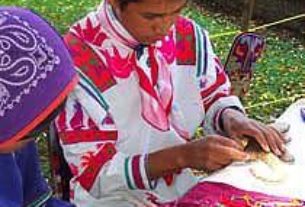Affirmative action can be defined as a process in which members of a certain ethnicity are compensated for the discrimination and second-class citizen status that their ancestors have endured in the past.
In recent Mexican history, there have been strenuous efforts to glorify Mexico’s indigenous heritage while at the same time downplaying the achievements of the Spanish conquistadores. Cynics, especially those attuned to events in Chiapas, may say that dead Indians are respected a great deal more in Mexico than live ones. Be that as it may, you will still see innumerable parks, streets, bridges, statues, schools, stadia, civic groups, sports teams and even brands of beer bearing the names Moctezuma and Cuauhtemoc. By contrast, the name “Cortés” is about as popular as the name “O’Malley” among baseball nostalgists who still mourn the Dodgers’ departure from Brooklyn. So we’re faced with the ironic situation of a man who changed history, being a virtual unknown in a country on which he exerted such a profound influence.
Hernán Cortés was born in 1485 at Medellín, in the southwestern Spanish province of Estremadura. His father, Martín Cortés de Monroy, was an infantry captain of distinguished ancestry but slender means. Though his family wanted him to practice law, Cortés preferred a military career. At nineteen he set sail for Hispaniola, the island today occupied by the Dominican Republic and Haiti. There, Governor Nicolás de Ovando made him a notary and gave him a grant of land. But the young adventurer was far from satisfied; his main thoughts were always of conquest and gold.
In 1511 he accompanied Diego Velázquez, an aide of the governor, in his expedition to add Cuba to the Spanish domains. He also found time to become romantically involved with Catalina Xuárez (or Juárez), a girl of aristocratic background whose family had settled in Cuba. Velázquez was made governor of the island and for the next few years relations between him and Cortés were, to put it mildly, strained. The governor twice jailed the young cavalier (each time Cortés escaped) and part of his displeasure seems to have been based on a belief that Cortés was trifling with Catalina’s affections. Cortés, temporarily distracted by one of her sisters, finally married Catalina and thus secured both the good will of her family and of Velázquez.
But the governor continued to have ambivalent feelings about Cortés. He named him captain-general of a fleet that was headed for Mexico but then apparently changed his mind and was about to make a change in command. A fleet and invading force had assembled at Santiago de Cuba and Cortés knew he would have to move fast before Velázquez relieved him. Even as he set sail, an angry Velázquez was on the quay determined to revoke Cortés’s commission. But Cortés, pleading that “time presses,” hurriedly took off and literally began his conquest of Mexico with the legal status of a mutineer. The expedition’s departure date was November 18, 1518.
Cortés first landed in Yucatan and there encountered a priest named Jerónimo de Aguilar. Aguilar had been shipwrecked in 1511, lived among the Maya, and learned their language fluently. What greatly puzzled the Indians was Aguilar’s insistence in observing his priestly vows and refusing to be tempted by the beautíful girls they threw his way.
Aguilar accompanied Cortés as his force moved in southwesterly direction. In Tabasco, after winning a battle against a local tribe, Cortés’s booty included a beautiful slave girl who had been captured by Mayan-speaking people and had learned the language, as had Aguilar. Her own language was Nahua, the tongue of Moctezuma’s empire.
This circumstance would have a profound influence on the Conquest. As he defeated the Tlaxcalans (and later made them his allies), as he kidnapped Moctezuma and held him hostage, as he survived the Noche Triste (when the Spaniards were driven out of the Aztec capital of Tenochtitlán), and as he defeated the valiant Cuauhtemoc to become master of Mexico, Cortés was ever served by the linguistic skills of the abducted slave girl and the marooned priest: Cortés would speak to Aguilar in Spanish, Aguilar to the girl in Maya, and the girl to Moctezuma’s representatives in their common language. Christened Marina by the Spaniards, she later learned Spanish, became Cortés’s mistress and bore him a son. To her own people she became known as Malinche, a term denoting betrayal. To this day, the word malinchista is applied to a Mexican who apes the language and customs of another country.
For Cortés, the later years were an anticlimax. How could it be otherwise? Having made himself master of the New World at age 36, in the remaining twenty-seven years of his life he had no way to go but down — or, at best, sideways.
Cortés was once quoted as saying that it was “more difficult to contend against (his) own countrymen than against the Aztecs.” We recall the difficulties he had with Governor Diego Velázquez. Velázquez continued to be a thorn in his side, sending an expedition against him after he had captured Tenochtitlán and then teaming up with Bishop Juan Rodríguez de Fonseca, chief of the Spanish colonial department, to undermine him at court. In 1521, year of the Conquest, Charles V was attending to matters in his German domains and Spain was ruled by Bishop (later Pope) Adrian of Utrecht, who functioned as regent. Velázquez and Fonseca persuaded the regent to appoint a commissioner with powers to investigate Cortés’s conduct and even arrest him.
Cortés went to Spain to plead his case. By this time Charles V had returned and Cortés forthrightly responded to his enemy’s charges. Denying he had held back on gold due the crown, he showed that he had contributed more than the quinto (one-fifth) required. Had he spent lavishly to rebuíld Tenochtitlán, damaged during the siege that brought down the Aztec empire? Of course he had, and the rebuilt Tenochtitlán was now more magnificent than any city in Europe, a true jewel in the Spanish crown.
The result was complete victory for Cortés. He was named governor, captain-general and chief justice of New Spain, and given a handsome salary and abundant lands. As for his enemies, both Velázquez and Fonseca were dead within a year.
Success breeds envy and there were always fresh antagonists. In July 1526 a commissioner named Luis Ponce de León arrived in Mexico to investigate all charges against Cortés. Their meeting was friendly but Ponce de León soon died of a fever. He was replaced by an unpleasant little bureaucrat named Estrada who did everything in his power to torpedo Cortés.
Cortés again returned to Spain to plead his case before Charles V. The trip was only a partial success. Though named Marqués del Valle and reinstated as captain-general, he did not regain his title as governor. Remaining in Mexico between 1530 and 1541, Cortés quarreled with the greedy, brutal Nuño de Guzmán and disputed the right to explore the territory that is today California with Antonio de Mendoza, the first viceroy.
He returned to Spain and in 1541 was almost drowned in a storm that hit his fleet while he was pursuing Barbary pirates. Having spent a great deal of his own money to finance expeditions, he was now heavily in debt. In February 1544 he made a claim on the royal treasury, but was given a royal runaround for the next three years. Disgusted, he decided to return to Mexico in 1547. When he reached Seville, he was stricken with dysentery and died December 2nd.
Cortés did not die of neglect, as did Columbus, or by execution, as did Nuñez de Balboa, discoverer of the Pacific Ocean. Though financially strapped when he died, Cortés lacked nothing for honors. The downgrading process began after his death, intensifying as Mexican historians embarked on that “affirmative action” program that glorified Meso-American ancestors while shunting the Spanish conquerors into relative oblivion.



